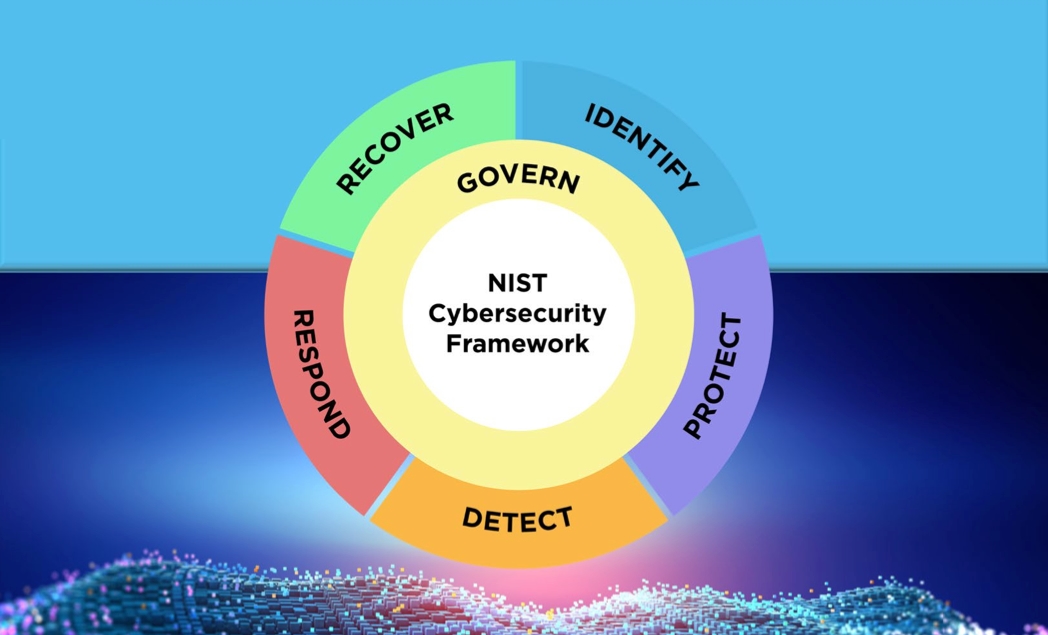NIST Cybersecurity Framework 2.0 Updates
 Mahak Pandey
Mahak Pandey
Cybersecurity is an ever-evolving field, with new threats and technologies emerging rapidly. To help organizations avoid these challenges, the National Institute of Standards and Technology (NIST) recently released version 2.0 of its Cybersecurity Framework (CSF) on February 26, 2024. This update introduces significant enhancements, including a new sixth function, "Govern," aimed at bolstering cybersecurity governance and aligning it more closely with organizational risk management.
A Brief Overview of NIST CSF
The NIST Cybersecurity Framework, first introduced in 2014, provides a comprehensive set of guidelines and best practices for managing and reducing cybersecurity risks. It is widely adopted across various sectors for its flexible, performance-based approach, which applies to organizations of all sizes and industries.
The Core Functions
The original CSF consisted of five core functions:
Identify: Understanding the business context, resources, and risks to manage cybersecurity efforts effectively.
Protect: Implementing safeguards to ensure critical infrastructure services are delivered.
Detect: Developing activities to identify the occurrence of cybersecurity events.
Respond: Taking action regarding a detected cybersecurity incident.
Recover: Maintaining plans for resilience and restoring capabilities impaired by cybersecurity incidents.
With version 2.0, a new function has been added to this foundational framework.
Introducing the Sixth Function: Govern
The "Govern" function focuses on ensuring that an organization's cybersecurity activities align with its broader policies, procedures, and risk management strategies. This new function underscores the importance of integrating cybersecurity into overall governance and risk management frameworks.
Core Areas of the Govern Function
Risk Management Strategy
- Develop and implement strategies to manage cybersecurity risks in alignment with organizational objectives and risk tolerance.
Policies, Processes, and Procedures
- Establish and maintain comprehensive policies, processes, and procedures for consistent cybersecurity risk management.
Roles and Responsibilities
- Clearly define and communicate roles and responsibilities for managing cybersecurity risks across the organization.
Compliance
- Ensure cybersecurity practices comply with relevant laws, regulations, and standards.
Awareness and Training
- Foster a culture of cybersecurity awareness and provide ongoing training to personnel.
Continuous Improvement
- Implement mechanisms for the continuous improvement of cybersecurity governance processes, including regular reviews and updates.
Why the Govern Function Matters
The inclusion of the Govern function in NIST CSF 2.0 highlights the increasing importance of cybersecurity governance in today's threat landscape. Here's why it matters:
Enhanced Oversight: The Govern function provides senior leadership with a structured approach to overseeing cybersecurity activities, ensuring they are aligned with the organization's strategic goals.
Integrated Risk Management: By embedding cybersecurity governance within broader enterprise risk management, organizations can better manage and mitigate risks across all business functions.
Compliance and Accountability: Clear policies and defined roles enhance compliance with legal and regulatory requirements, establishing accountability for cybersecurity decisions and actions.
Resource Allocation: Effective governance ensures resources are allocated efficiently, supporting informed decision-making and prioritization.
Security Culture: Promoting awareness and training helps embed a culture of security within the organization, empowering employees to recognize and respond to cyber threats.
Implementing NIST CSF 2.0
To implement NIST CSF 2.0 effectively, organizations should:
Assess Current Practices: Evaluate existing cybersecurity governance structures and identify areas for improvement.
Develop a Governance Framework: Establish a comprehensive governance framework that aligns with organizational goals and risk management strategies.
Define Roles and Responsibilities: Clearly define roles and responsibilities for cybersecurity governance, ensuring accountability at all levels.
Implement Policies and Procedures: Develop and enforce robust policies, processes, and procedures to support consistent and effective cybersecurity risk management.
Foster a Security Culture: Promote cybersecurity awareness and provide ongoing training to all personnel to enhance their understanding and management of cyber risks.
Review and Improve: Regularly review and update the governance framework to address emerging threats and evolving business needs.
Conclusion
NIST CSF 2.0 represents a significant step forward in cybersecurity risk management, providing organizations with a more holistic approach that integrates cybersecurity into overall governance and risk management processes. By adopting this updated framework, organizations can enhance their resilience and responsiveness to cyber threats, ensuring a robust security posture in a rapidly changing digital landscape.
Understanding and implementing the new "Govern" function is crucial for any organization aiming to stay ahead of cyber threats and align their cybersecurity efforts with their broader strategic objectives. As the threat landscape continues to evolve, frameworks like NIST CSF 2.0 will be indispensable in guiding organizations toward effective and sustainable cybersecurity practices.
Subscribe to my newsletter
Read articles from Mahak Pandey directly inside your inbox. Subscribe to the newsletter, and don't miss out.
Written by

Mahak Pandey
Mahak Pandey
Junior Software Developer 🚀🪄. I recently publish the "Cyber Security" Book as a Co-Author.